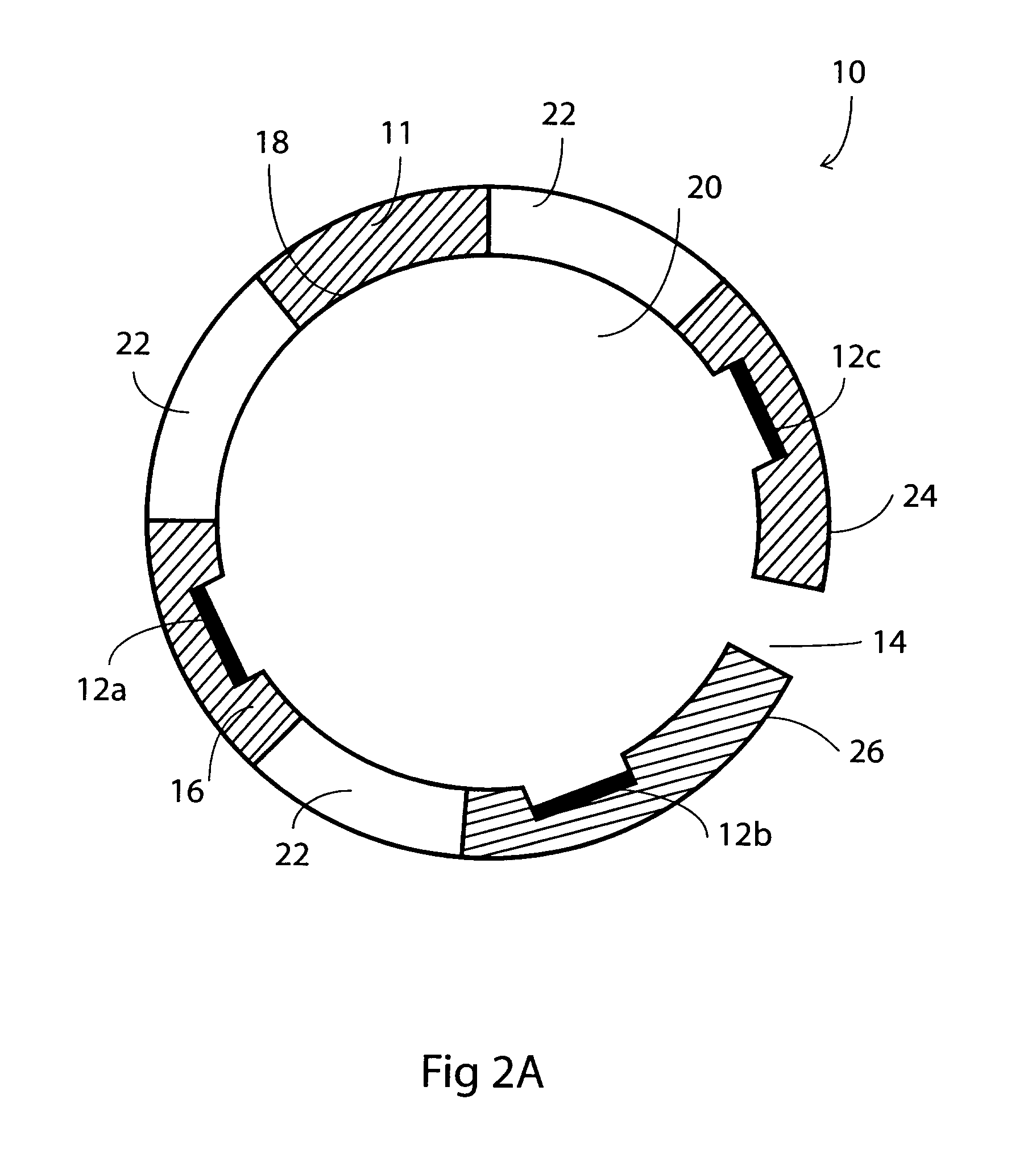Implantable Medical Cuff with Electrode Array
a medical cuff and electrode array technology, applied in the field of biomedical arts, can solve the problems of large power consumption, complicated control equipment, and inability to achieve attractive solutions, and achieve the effects of minimal tissue manipulation, minimal blood vessel constriction, and softness and pliability
- Summary
- Abstract
- Description
- Claims
- Application Information
AI Technical Summary
Benefits of technology
Problems solved by technology
Method used
Image
Examples
Embodiment Construction
[0050]As shown in FIG. 1, a medical cuff 10 according to the present invention has a tubular cuff body 16 which has an inner surface 18 enclosing a generally cylindrical bore 20 for receiving a nerve or a portion of other body tissue (not shown). While this specification describes the cuff in association with a nerve, it is understood that the cuff is also adapted for use with other soft tissue, such as muscle. The cuff body 16 is formed from a web 11 of biocompatible film that is wound into a generally tubular configuration. Web 11 has opposed longitudinal edges 24, 26 allowing cuff body 16 to be opened, placed around an elongated portion of body tissue, and sealed with the tissue passing through the bore 20.
[0051]At least one aperture, such as slit 22, is established along the cuff body 16 through web 11 by any suitable method, such as laser cutting. Preferably, a plurality of such slits is distributed throughout web 11. The slits 22 allow fluids within the body to permeate the me...
PUM
 Login to View More
Login to View More Abstract
Description
Claims
Application Information
 Login to View More
Login to View More - R&D
- Intellectual Property
- Life Sciences
- Materials
- Tech Scout
- Unparalleled Data Quality
- Higher Quality Content
- 60% Fewer Hallucinations
Browse by: Latest US Patents, China's latest patents, Technical Efficacy Thesaurus, Application Domain, Technology Topic, Popular Technical Reports.
© 2025 PatSnap. All rights reserved.Legal|Privacy policy|Modern Slavery Act Transparency Statement|Sitemap|About US| Contact US: help@patsnap.com



